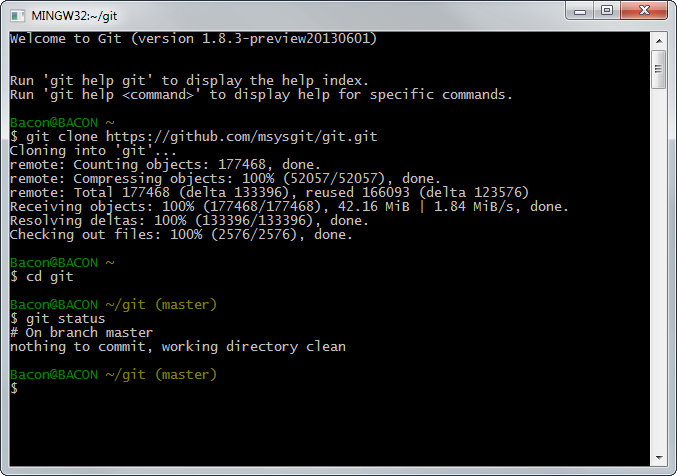
Git for Windows: Navigating the Development Landscape
Table of Contents
I. Introduction
Version control systems are the backbone of modern software development, providing a structured approach to tracking changes in code, collaborating seamlessly, and maintaining project integrity. Among the myriad version control systems available, Git stands out for its efficiency, flexibility, and distributed nature.
In the fast-paced realm of software development, understanding Git and its implementation on Windows becomes paramount for developers looking to streamline their workflow and enhance collaboration.
II. Understanding Git
Git, a distributed version control system, empowers developers by allowing them to work collaboratively on projects. Unlike centralized systems, Git allows each user to have a complete copy of the repository, fostering a decentralized and efficient workflow. Key concepts like repositories, branches, commits, and merges form the foundation of Git’s functionality.
III. Installing Git on Windows
Getting started with Git on Windows is a straightforward process. Begin by downloading the installer from the official Git website and follow the step-by-step guide for installation. Configure your username and email to establish your identity within the Git environment, ensuring a seamless user experience.
IV. Basic Git Commands
Once Git is installed, mastering fundamental commands is essential. Creating repositories, cloning existing ones, and initializing new projects are common tasks. Learn to add, commit, and push changes to the repository, laying the groundwork for effective version control.
V. Branching and Merging
Branching is a powerful feature in Git, allowing developers to work on isolated features or fixes without affecting the main codebase. Understand how to create, switch, and merge branches to facilitate a smooth and organized development process.
VI. Git for Collaboration
Collaborative workflows are at the heart of Git’s appeal. Explore best practices for collaborating with team members, handling conflicts, and managing pull requests effectively. Git’s distributed nature ensures seamless collaboration, even in large and complex projects.
VII. Git GUIs for Windows
While Git can be operated through the command line, graphical user interfaces (GUIs) provide a user-friendly alternative. Evaluate popular Git GUI tools for Windows, considering their advantages and drawbacks to choose the one that aligns with your preferences and workflow.
VIII. Best Practices
Efficient usage of Git involves adhering to best practices. Learn tips for organizing repositories, handling large projects, and optimizing performance. Understanding these practices ensures a smooth and productive development experience.
IX. Troubleshooting Git Issues on Windows
Encounter and resolve common problems that Windows users face with https://www.technewsguy.com/. From connectivity issues to conflicts and errors, equip yourself with troubleshooting steps to navigate potential roadblocks seamlessly.
X. Integrating Git with IDEs on Windows
Many developers prefer working within Integrated Development Environments (IDEs). Discover how to seamlessly integrate Git with popular IDEs on Windows, enhancing your development workflow and boosting productivity.
XI. Advanced Git Features
As you grow more comfortable with Git, explore advanced features like rebasing and tagging. Leveraging these capabilities allows you to address complex project scenarios and maintain a highly organized repository.
XII. Security Considerations
Securing your Git repositories is paramount. Delve into best practices for authentication, access control, and overall repository security on Windows. Understanding these measures protects your codebase and sensitive information.
XIII. Continuous Integration with Git on Windows
Implementing Continuous Integration (CI) with Git automates testing and deployment processes. Explore tools and platforms that seamlessly integrate with Git, creating robust CI/CD pipelines to enhance your development pipeline.
XIV. Future Trends in Git for Windows
Stay ahead of the curve by exploring emerging trends and features in Git development. From new functionalities to enhanced user experiences, keeping an eye on the future ensures you’re well-prepared for the evolving landscape of version control.
XV. Conclusion
In conclusion, mastering Git for Windows opens up a world of possibilities for developers. From the basics of installation to advanced features and collaborative workflows, Git empowers you to navigate the development landscape with confidence. Embrace Git, experiment with its features, and elevate your coding experience.

